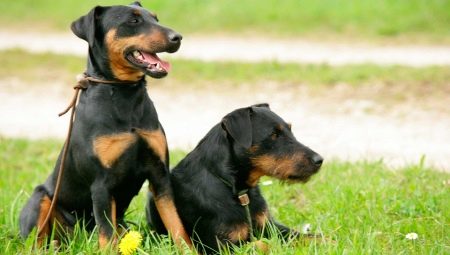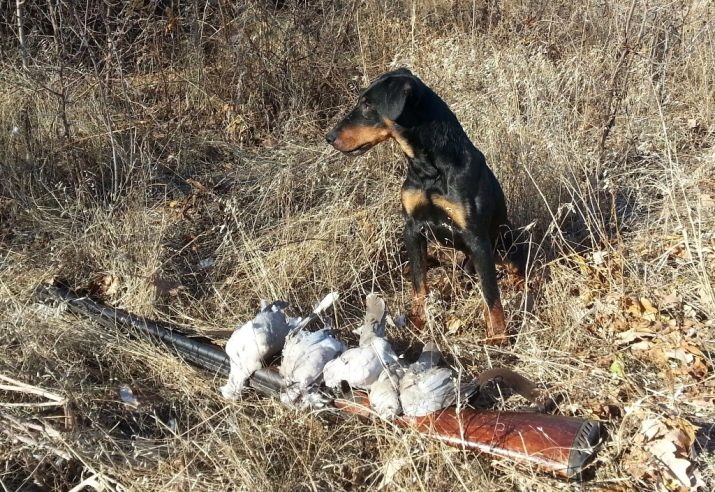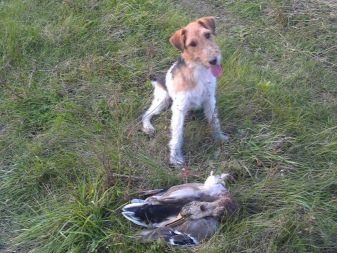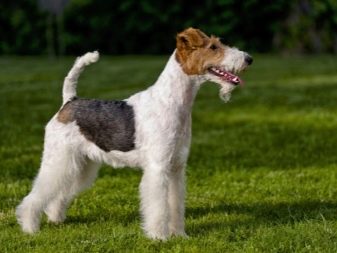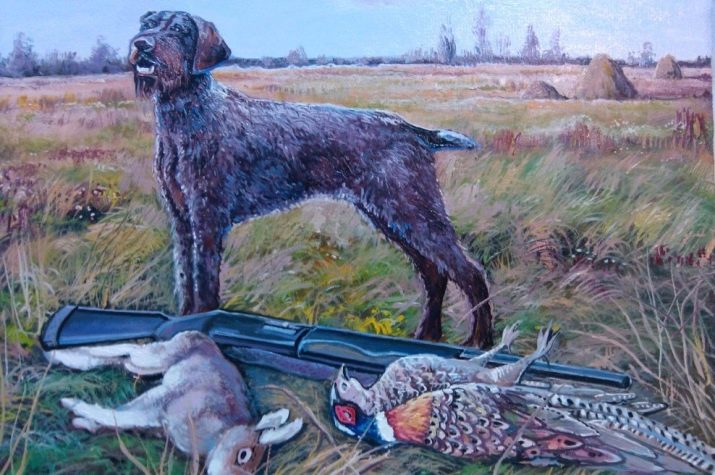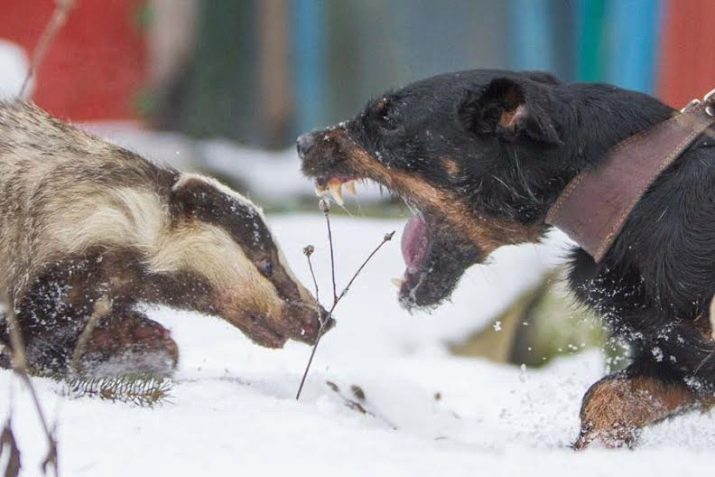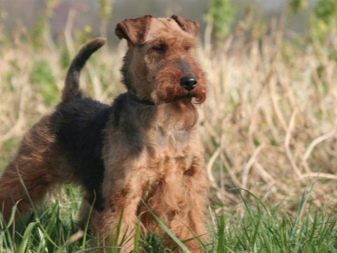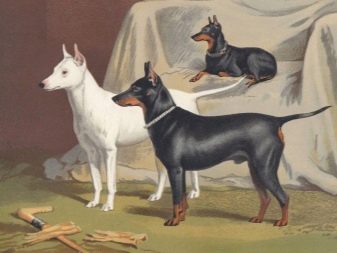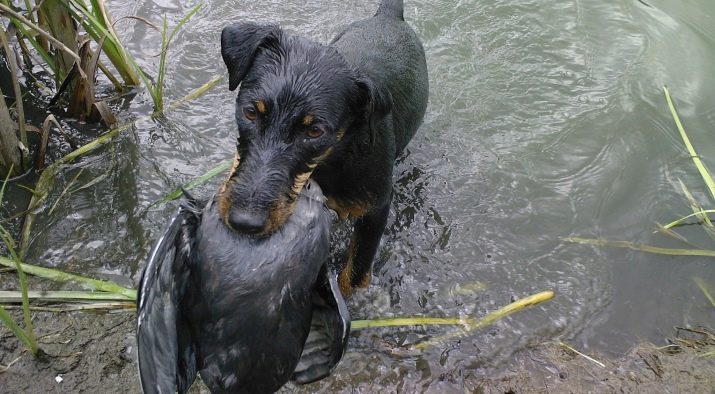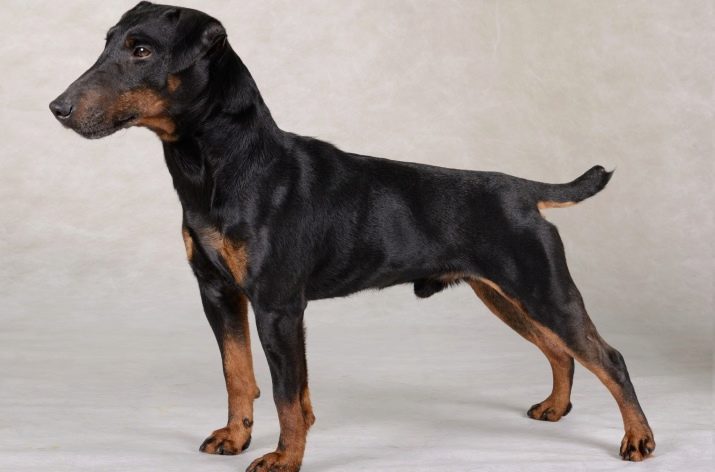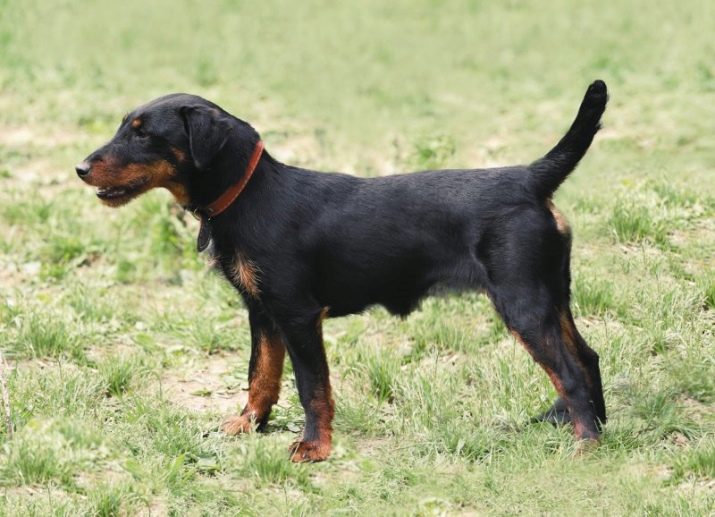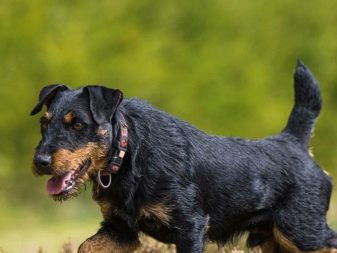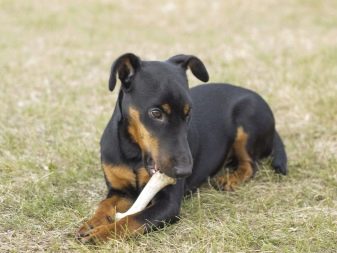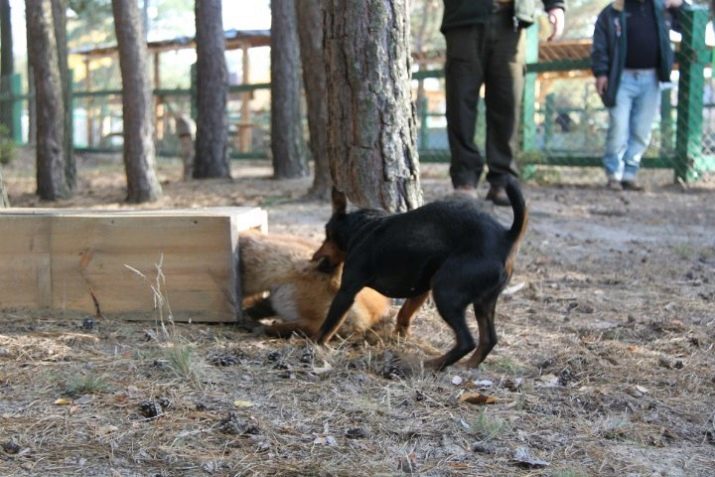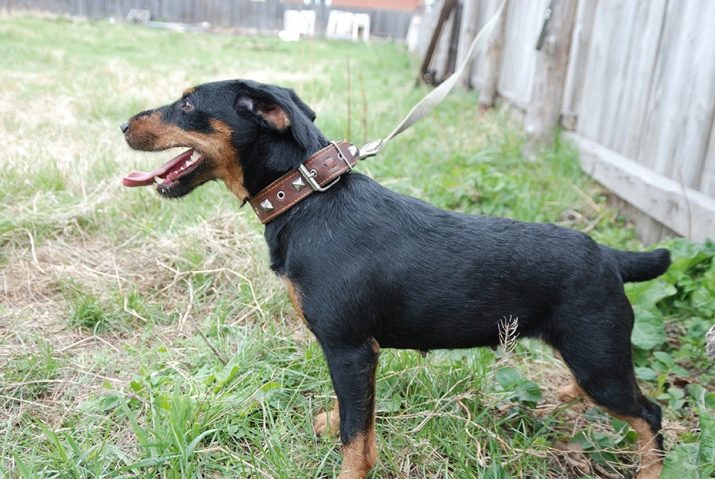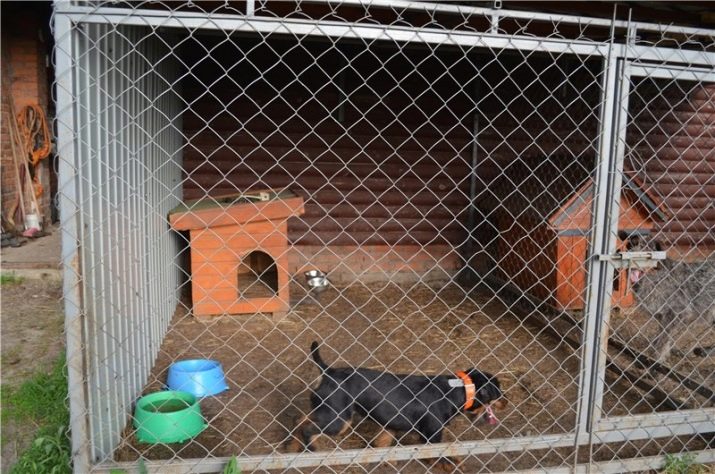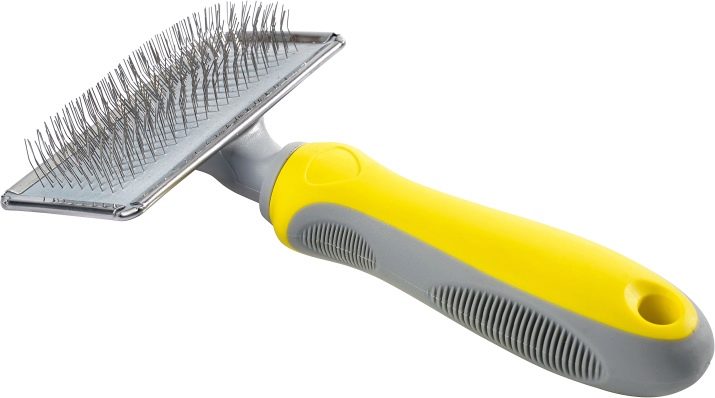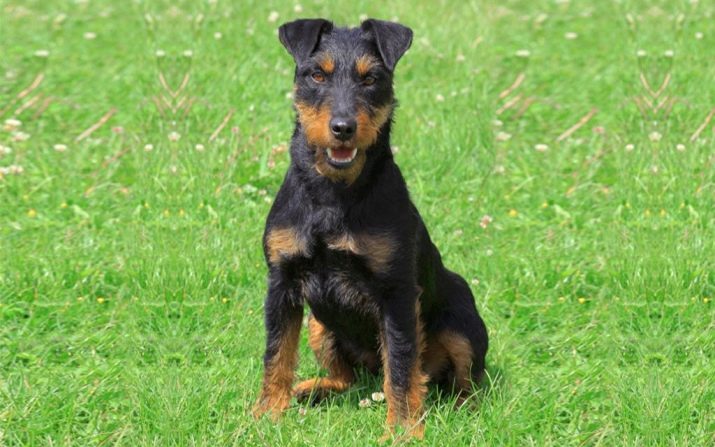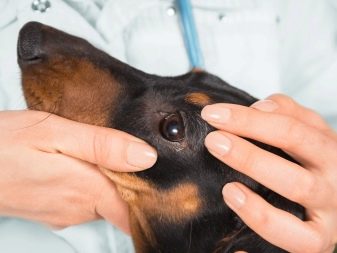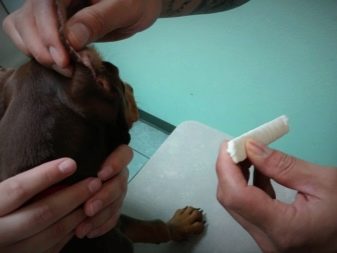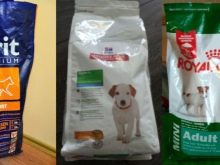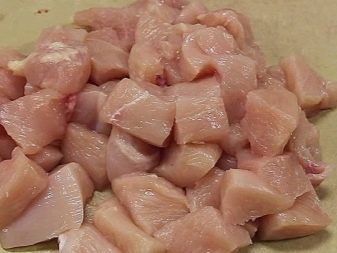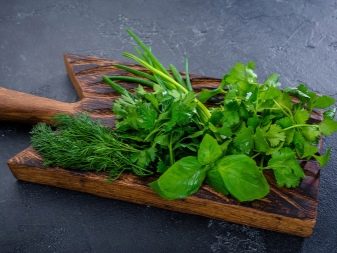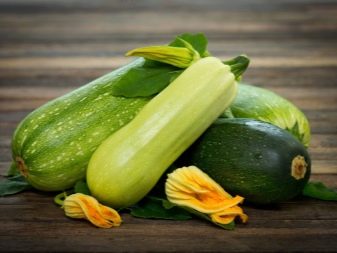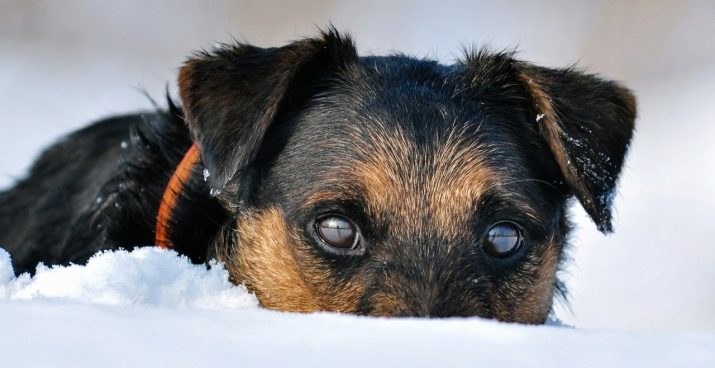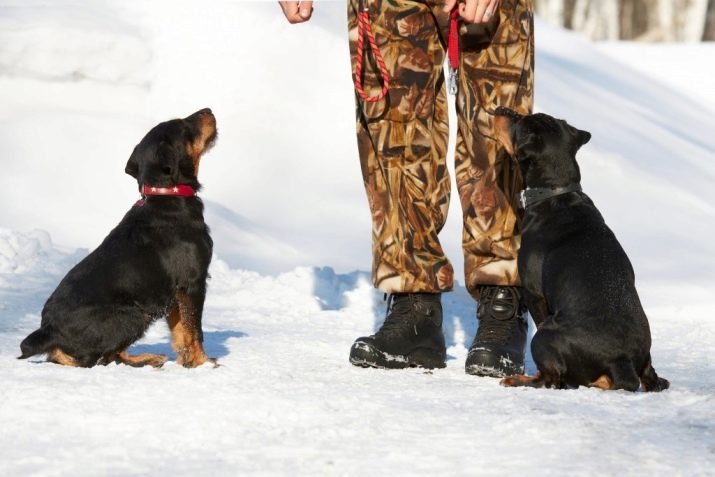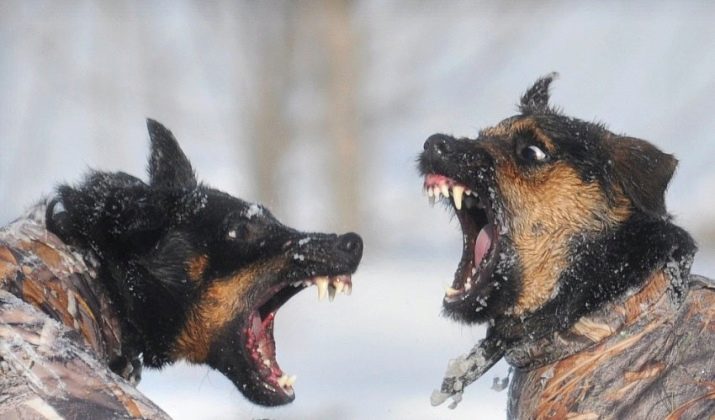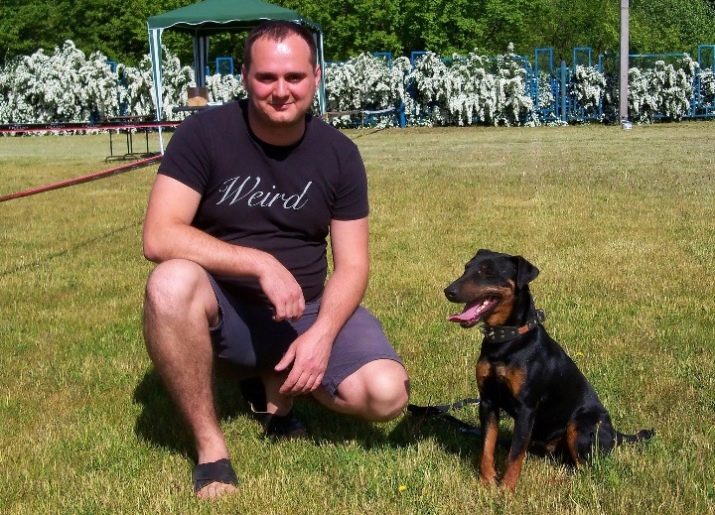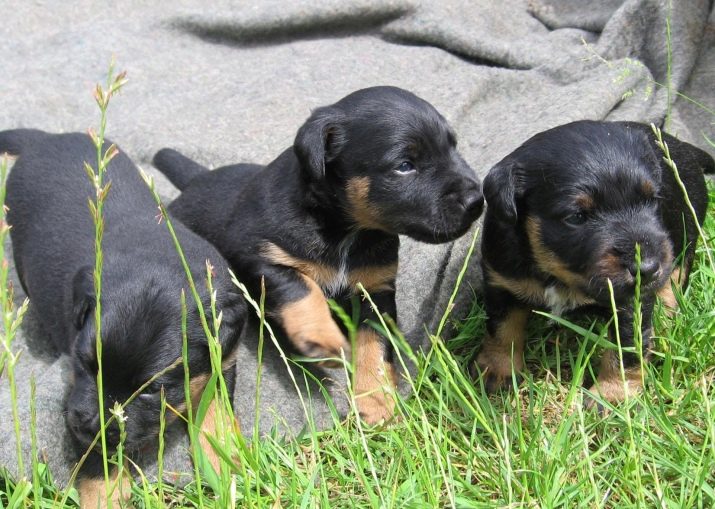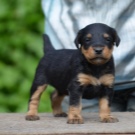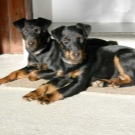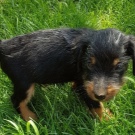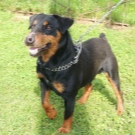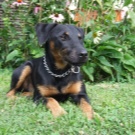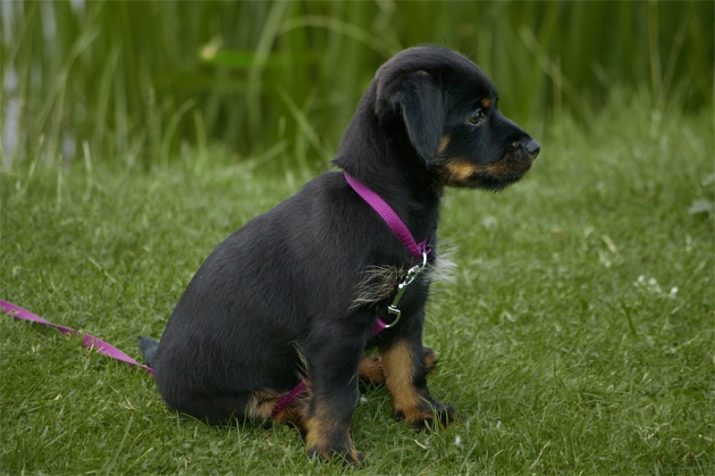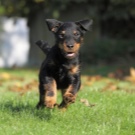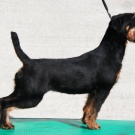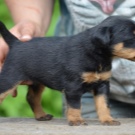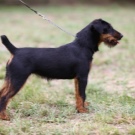Most terrier breeds were bred in the UK as hunting dogs, but by now they have mostly turned into pets and cute companions. The yagdterrier stands out from this list by most of the basic qualities - it comes from Germany, and still remains an avid hunter, which in most cases is not recommended to be installed in a city apartment.
However, if you are not keen on hunting, this does not mean that you definitely do not need such a dog, because he has a number of characteristics that make him an excellent pet.
History of origin
The century before last, when most modern terrier breeds appeared, new breeds of dogs were often derived situationally - they do not have a certain “founding father” who would be engaged in high-grade breeding, from generation to generation setting the goal of improving certain characteristics of the animal.
Then ordinary people, who needed a dog to hunt or protect the territory from rodents, were looking for puppies who could solve the problem. The German Jagd Terrier is different in this respect from most of its relatives - he is a factory breed, that is, he was created meaningfully, already understanding what should happen in the end.
Jagdterrier is an older fox terrier that has been improved by adding impurities from other hunting breeds. By that time, Fox had been considered a top hunting dog for several decades - it was massively used by European hunters, since such an assistant turned out to be invaluable not only in fighting inside the burrow, but also in pursuing such prey as hares or even ungulates.
At the same time, the dog was highly valued from an aesthetic point of view - he had a nice appearance, and therefore became a frequenter of various canine exhibitions. This versatility largely prompted the creator of the German hunting terrier to create a new breed.
Breeders of those times were insanely obsessed with exhibitions and often forgot that a hunting dog should be first and foremost not a handsome man, but a real fighter.
Walter Zangenberg also raised fox terriers, but the man’s favorite hobby was hunting, and he decided to focus on the fighting qualities of the dog. Hunters have repeatedly noted that black and tan individuals, strongly resembling the classic Old English terrier and not considered handsome, in combat conditions showed themselves much better.
In 1923, the German specially bought "defective" puppies - their mother was almost black, because another breeder gave him kids for a penny. The brood consisted of two females and two males, which Tsangenberg crossed with other fox terriers discarded in color, showing wonderful properties in the hunting process.
For the German breeder, the white color of the coat, which is necessarily present in the color of this Fox, became a sign of marriage - if it was too much, the puppy was rejected.
Surprisingly, in the emergence of a new breed helped Nazism is gaining popularity - its ideology was not very well combined with the fact that something good could be produced abroad, because many other German breeders joined the development of their own hunting breed,which would be very different from foreign ones for the better. Already in 1926, Zangenberg organized
German Jagdterrier Club, and also formulated the main principle of the new breed: no exhibitions, the main thing - the maximum practicality for hunting use. The new organization attracted to its activities the famous cynologist Herbert Lackner, and the following year a review was held, in which 22 dogs took part.
However, today's jagdterriers are very different from those that were displayed in the 20s of the last century. The fact is that at first the gene pool was very limited - there were only four common ancestors, so after a few years there was a risk that the new breed would simply degenerate due to incest. In order to avoid such a development of events, Old English Terriers, as well as velshes, were practically discharged from England.
In 1934, the first official standard appeared in which practically nothing was said about the appearance - it simply should not have prevented the dog from performing its work. At the same time, there were a lot of “professional” requirements - the dog must be physically fit, have the ability and desire to confidently follow the trail and bark loudly when detecting prey, the absence of any fear of water or a fight in a tight space.
Already in the 40s, the creation of a new breed was finally completed, and for those times the haggling terriers were considered the most aggressive towards the inhabitants of the burrows.
The exterior of the dog was so unassuming that no one even thought of buying him as a companion or pet - it was a product especially for hunters.
After the Second World War, Germany was divided, so the development of the breed went two separate ways. In the GDR, there are very few representatives of the breed and the emphasis has been on a simple increase in the population for a long time, which is why the German Jagd Terrier was close to extinction. In addition, the country was not a member of the International Canine Federation (ICF), and therefore representatives of the Federal Republic of Germany went to the exhibitions, where there were much more such dogs and the breeding was successfully continued.
The ICF recognized the breed in 1954, but the English and American Kennel clubs of the game-master were not included in the official lists - the unassuming appearance affected. These dogs, despite the lack of official status, still got to the States, but they were never popular here - local hunters used the help of dogs of local breeds. In the USSR, animals came from the beginning of the 1970s and managed to settle down there.
Breed description
The main feature of the jagdteriere is that it is purely hunting, and not an exhibition dog - it does not look attractive to those who are looking for aesthetics for aesthetics, but is an example of functionality.
The adult dog is distinguished by a relatively small, but firmly knit body - it is ideal for penetrating holes and engaging in mortal combat. The size of the dog is modest, but clearly standardized: height is 33-40 cm, while the body circumference should be 10-12 cm more than the height at the withers.
There is no other dog breed in the world where a similar proportion would be established, but in this case it is fundamentally important: an even more powerful animal will not be maneuverable under burrow conditions, and a smaller breast volume will be insufficient for good stamina and loud voice.
The weight of the animal differs depending on the sex: the males are heavier and weigh about 9-10 kilograms, while their friends are on average one and a half kilograms lighter.
The head of the animal has an elongated shape and resembles a pointed wedge; its main part is powerful jaws with a strong grip and pronounced chin. The bite is scissor-like and very dense; it is often impossible to break free from the grip of such a dog.The eyes of the yagdteriere are small and hidden quite deep in the skull box, while even from the look of the animal it can be seen that it is not afraid of anything and is set up extremely resolutely.
Experts point out that just before a clash with the enemy, the gaze becomes a “serpent” at all - there is nothing in it except coldness and mercilessness. The ears have the shape of a Latin letter “V”; they hang loosely down, being somewhat deflected towards the forehead.
The head is attached to the body with a powerful, but relatively short neck, which flows into a strong back. The tail, as befits a normal dog, the animal keeps either straight or slightly raised - this feature makes it easier for the owner to retrieve a pet from the hole. Body support are oval paws on bulky pads with a hard consistency.
Representatives of the breed are divided into two types - smooth and hard-haired, although obstacles to their mating with each other are usually not expected. Moreover, many hunters above all appreciate the intermediate version of the coat. Regardless of which species an individual belongs to, its hair is always distinguished by its high density and coarse texture, it fits tightly to the body of the dog and is combined with a thick and warm undercoat.
The peculiarity of hairs is that neither dirt nor snow sticks to them, and even they don’t need any kind of care, although they warm their four-legged owner in accordance with the best expectations. For a real gamemaster, the main requirement for which is the maximum practicality of the characteristics, it is important to completely cover the body with hair - the stomach and the inner surface of the thighs must also be protected. As for the color, there is dominated by a combination of black and dark brown with tan, it is possible gray or the presence of a "mask".
Jagdterier is adapted to the most extreme conditions and does not require any careful care, he can easily live in conditions of even unheated premises - for example, on the balcony or in the garden pavilion.
Character
Jagdterrier was conceived as a typical bully, which is a very useful characteristic for a burrowing hunting dog. The beast for this dog is the causative agent of just the same unlimited aggression, in a fit of rage the animal rushes to the attack even on the enemy, which, it would seem, can crush him with one size. Dog brutal and least of all is thinking about how to get off with minimal losses - he will not back down from his own, because such pets can easily be seriously injured or even die on the hunt.
It is foolish to expect from a pet with such characteristics that it will be servile or extremely obedient. Under the conditions of a burrow the dog must constantly demonstrate independence and determination., he is not afraid of anything and does not compromise, and all these characteristics inevitably translate into everyday life. To put it in the language of psychology, this is a very strong personality, and if you take such a puppy home, you should prepare for the fact that upbringing needs to start as early as possible.
And any mistake in this may well haunt the owner.
A yagdterrier often demonstrates excessive autonomy, therefore it should not be given any slack - an owner who wants to control the situation must constantly demonstrate rigor. A distinction should be made between severity and cruelty - the second is completely inappropriate, especially since such animals are better not to provoke once again.
If you treat a dog wisely, it will surely become attached to you, but it will only bring good welcome to well-known people. This is not the dog that happily meets any person. In most cases, the dog is completely indifferent to strangers, but can show aggression and attack, because in crowded places you should watch it more closely.
The owner of the jagdter is always alone - the dog can interact normally with the rest of the household, but will not obey them. Representatives of the breed differ in tolerance to the presence of living beings, they often coexist peacefully even with other pets, but it is not excluded that the animal will arrange a real war for your cat. To solve this problem is extremely difficult - if you remember, the four-footed hunter in the pursuit of prey always goes to the end and will not miss her.
With innate endurance and adaptability to significant physical exertion, it would be foolish to keep the game-dugger in captivity - at least he will be sad and will not feel happy. For this reason, the dog, even if it is used as a guard dog, is never chained. Street maintenance on the plot is quite possible, but only in the presence of a spacious kennel and the same aviary.
If you decide that the pet will live on the street, take care of the safety of neighbors and any pets - they must be safely protected from your beast, because once again you should not check its hunting instincts.
Maintenance and care
During the breeding process, the creators of the breed made the main emphasis on precisely to simplify the care of animals to the utmost, minimizing it. It is not for nothing that the yagdterrier has not yet been recognized as a separate breed either in the USA or in the UK - in terms of appearance, it looks like a mongrel, and an unknowing person does not recognize a purebred dog in it, but it will be no more diligent to care for such a pet than for unpretentious street four-legged.
At the same time, experts still advise combing hard dog hair at least once a week. - it is necessary both for elementary accuracy, and in order that in the accumulated pollution bacteria did not start.
Animals with significant stamina usually need regular use of their abilities, and the yagdter terrier is the dog who loves long walks and really needs them. Experienced dog breeders indicate that representatives of the breed walk for at least an hour, and the more often you do this, the better for your pet's well-being.
In the household plot, the pet's need for walking is partially leveled, provided that it is not attached and not closed in the aviary - that is why it is said that the animal cannot be kept on a chain. As for the apartment, it’s a difficult question: on the one hand, such a friend of a person here will not be able to walk around and will feel constrained, on the other hand, an intensive mode of walking along the street could probably solve the problem.
Jagdterrier is ascribed immunity at the level of dogs most resistant to various infections, but it is necessary to take into account the conditions in which its owner lives. If a slightly more painful dog is constantly looked after and monitored, then a dog of such a breed is acquired by those who do not need extra trouble, and the fame of the “unkillable” health of the pet leads to the fact that his condition generally goes to chance. At the same time, the animal often lives on the street, and even if it does not, it requires regular long walking, so it can easily pick up infection or parasites in the yard.
The probability of such a development of events is especially high if the quadruped is used for its intended purpose, that is, for hunting.
In order not to bring the situation to extremes and not to face unnecessary problems, it makes sense to carry out certain preventive measures - that's when the dog will become truly immortal. All required vaccinations must be given on time. (it is better to consult their list with a veterinarian who knows the specifics of the region), in addition, regular treatment of the wool from parasites should be carried out. Helminths often pester the jagdterrier because antihelminthic drugs must always be present in their food.
There is also a certain health hazard that is caused by dirt, which, during walks in the fresh air and especially digging holes, can get clogged up in the most unexpected places. The ward’s ears and eyes are subject to regular inspection, from there using a damp cloth you must remove any foreign matter, and in case of any abnormalities you shouldn’t hope that the dog has bulletproof immunity - contact your veterinarian.
A peculiar indicator of the correctness of the contents of the game lizard is the condition of its claws. If the dog walks enough, they will wear out themselves to that length, which does not particularly hinder the animal and does not harm the floor covering. If the claws do grow back, they need to be trimmed. This is useful not only for aesthetics and the preservation of the interiors, but also for the dog itself, which they prevent from moving normally.
If the care is organized properly and you diligently adhere to the simple principles described above, you can expect your pet to live 13-15 years.
What to feed?
On the one hand, the jagdter terrier is unpretentious in everything, including food, on the other hand, the hunting dog must always be fit and fully alert, and therefore the owner himself is interested in feeding his pet with the highest quality possible. As in the case of representatives of any other breeds, You can make up the diet of the beast from both factory-made dry feeds and from self-selected products.
With dry food, everything is clear - here the recommendations are the same for all dogs. The higher the class of the product, the better, and although premium and super-premium costs considerable money, it’s not worth saving on the health of a dog risking life in a fight with wild animals. Experts point out that certified products are not only completely safe for the pet, but also contain all the necessary vitamins and minerals. At the same time, dry food practically does not contain water, which means that for their full digestion, the animal must have constant access to drinking water.
If you decide to refuse the services of factory manufacturers and are ready to independently prepare a diet for your dog, please note that all products must be fresh. A dog should not be given yesterday’s food - be prepared to cook it again each time. The list of permitted and necessary ingredients should include the following products.
- Meat. This component is fundamentally important for any predator, but doubly for the game terrier, because these are proteins responsible for building muscle. It is the meat that makes the dog strong and capable of defeating any enemy in melee. At the same time, the dog's digestive system is not always ready to digest excessively fatty foods, therefore pork or lamb is undesirable. It is better to focus on chicken, beef and turkey.
- Offal. In principle, they can be considered as another type of meat - it is tasty, and useful, and relatively inexpensive. Hearts and lungs, stomachs and kidneys of a cow or bird will be just right.
- Sour milk products. Fresh milk can not be given to an adult jaggery, like most other dogs, because adult animals do not have the ability to break down lactose. At the same time, milk contains many beneficial components, which are also contained in yogurt, kefir, ryazhenka and low-fat cottage cheese, but lactose is no longer there.
- Cereals. Jagdterrier rightly refers to the number of the most active and mobile dogs. For a healthy individual, constant movement is the norm and an indicator of normal health, and this requires a large amount of carbohydrates. The source of such can be the same products that are used for these purposes and the man - buckwheat and oatmeal, millet and rice.
- Vegetables. For good health and proper metabolism, a dog needs a complex of vitamins and minerals, and its primary source is vegetables.Decorative dogs are often fed fruit, but the jagdterrier can get everything they need from simple food - zucchini and beets, carrots and cabbage, as well as greens. All this can be given both raw and boiled.
As with the vast majority of breeds, yagdteriera forbidden to feed food from the human table - The dog's digestive system is fundamentally different and will not cope with such a challenge. Sweet, spicy, spicy and fatty foods, as well as smoked meats and pastries, will be completely redundant in its menu. Feed your pet like inappropriate products, you risk a day or two to be left without a faithful assistant in the hunt.
The mode of feeding the animal depends on what life stage it is at. So, babies consume very little food at a time, however, they must be fed at least four times a day. In most cases, an adult individual will have enough two meals a day, but exceptions should be made for pregnant women and nursing bitches - their bodies require an increased amount of energy and nutrients, because they have three meals a day. In the latter case, experts recommend also to introduce table vitamins, which are sold in any veterinary pharmacy, as a separate item.
Like many other dog breeds, the lizard dogs do not understand when it is necessary to stop in eating - the predator cannot be sure that the next prey will be soon, because it eats to the bone while it is possible. In the wild, it would hardly hurt the dog, but at home content an enthusiastic owner could easily feed the pet to the state of a fat and unwieldy carcass, with which there would be no point in hunting anymore.
Even if you are not a hunter, it is highly undesirable to bring a dog to such a state - obesity leads to an increased load on the cardiovascular system and shortens the life span of a pet.
The dosage of food is usually calculated by eye, but keep in mind that in winter, individuals residing in open enclosures need to increase their portions - it is possible to fight the cold only at the expense of extra calories. Experienced dog breeders indicate that in the presence of pure snow instead of water it is better to give it.
Upbringing and training
The willful jagdteriera must begin to be trained from the first day of his stay in the house, otherwise he will consider himself the master of the situation himself. Certain rules of behavior for a new family member should be thought out even before he appears in the house, since representatives of this breed lose respect for an illogical person who is able to drastically change his views.
For the same reason, the requirement for compliance with the rules should be permanent and mandatory, any concessions are unacceptable. Agree with all households that everyone will react to a certain behavior of the dog in the same type - then the training will go much faster.
At the same time it is unacceptable to treat the animal unfairly or cruelly.
Hardness and perseverance for the owner of the lagger terrier are mandatory traitsotherwise, an uncompromising dog will not consider it sufficient authority. It is unacceptable to gain authority with the help of physical strength, even if it seems to you that the dog meaningly does not want to carry out your commands.
By allowing corporal punishment of a puppy or repeatedly demonstrating injustice, you risk running into a reaction when it grows up, But such an enemy is extremely serious and dangerous.
Certain manifestations of aggression, which sometimes occur in an unprepared jagdteriere, are completely irrelevant in society, therefore it is important to take up the socialization of the baby in a timely manner - without this, you will have constant problems with him in the city.It is necessary to try to develop a normal reaction to strangers and other animals in a puppy - it should not see prey or enemies in everyone around. You can accustom your pet to such rules. from the age of three months.
Training puppies as hunting dogs implies its own rules and begins a little bit later - roughly from the age of six months.
Properly trained jagdterrier becomes not only a friend, but also a real protector of the whole family, he can effectively guard a private household and be a desperate assistant to his master hunter. However, so that the training was successful and without unrecoverable errors, it is better to entrust such a task to the expert in your field. A professional knows how to subordinate a willful and aggressive dog to his authority, without breaking his psyche and developing an unnecessary bitterness towards the whole world.
Nickname list
Jagdterrier is a fierce hunter who doesn’t have over-measuredness or the pursuit of a stylish look. For the same reason, the nickname for him is chosen in such a way as to convey the harsh essence of the hunting. For boys, foreign names, toponyms or derivatives of foreign words meaning a certain characteristic, praising the dignity of the dog, are most often chosen. Given the German origin of the breed, dogs are often given appropriate nicknames - they sound organic Hans, Helmut and Dietrich.
Do not invent too long and complex constructions - the nickname must be short so that the pet can easily remember it, and you can quickly and confidently pronounce it in combination with any team.
For girls, German names are not chosen - theoretically, Greta, but they are called various foreign names from other languages. The name is very bright Storm - it fully conveys the essence of the nature of the hunting dog and its restlessness. Unusually and originally be called darling Armor. Of the remaining popular options, select Troy, Bagheera and Vesta.
Look at the video below for the features of the Jagdteriere
